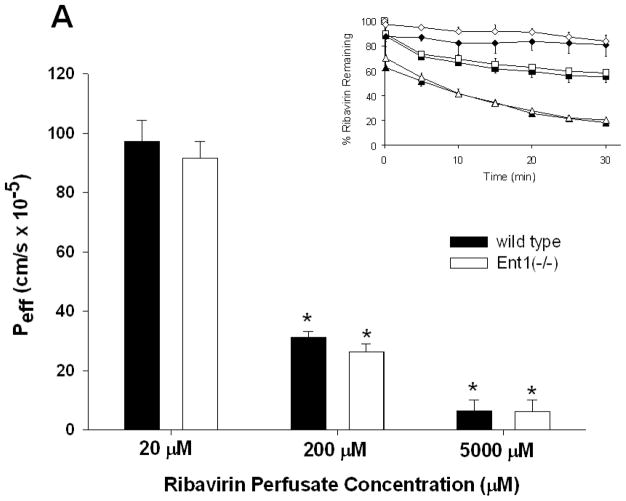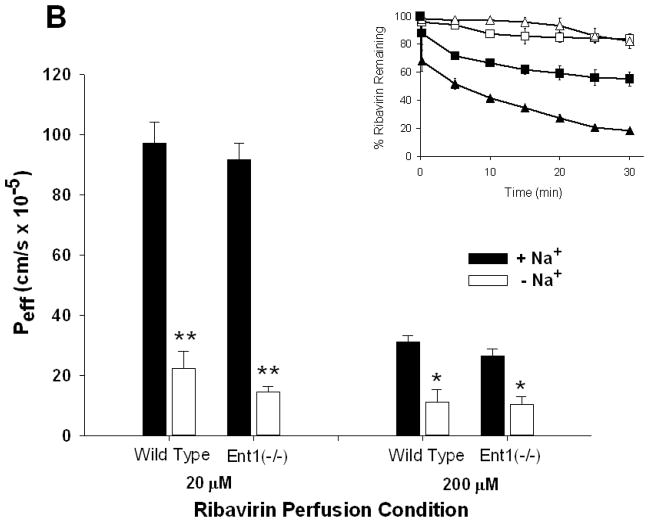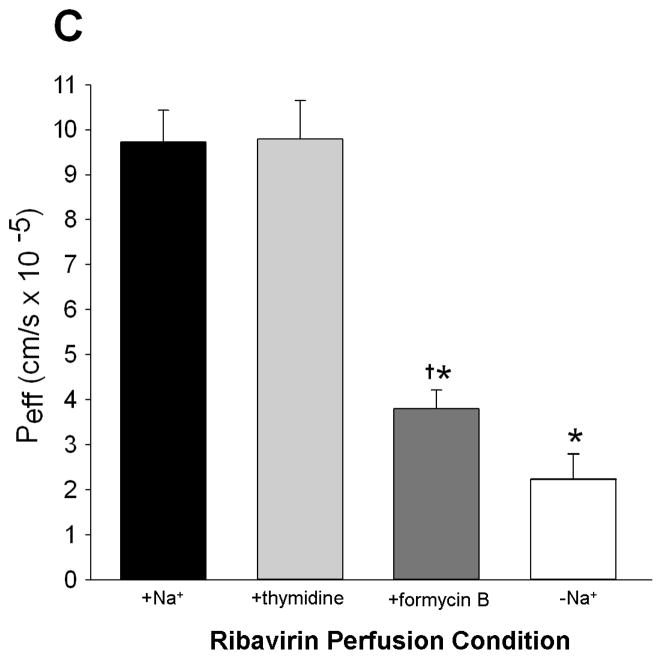Figure 1.
The effective ribavirin intestinal permeability (Peff) in wild-type mice was not significantly different than in Ent1(−/−) mice, in the presence of sodium, after 30 minutes of 20, 200 or 5000 μM ribavirin intestinal perfusions (A). In contrast, ribavirin’s Peff in wild-type and Ent1(−/−) mice was significantly reduced in the absence of sodium (B). Ribavirin’s Peff after 20 μM perfusions was unaffected by 250 μM thymidine, a Cnt3 inhibitor, but was significantly reduced by 500 μM formycin B, a Cnt2 inhibitor (C). The inset graphs in 1A and 1B display the % ribavirin remaining in the intestinal lumen of mice during 20 μM (triangles), 200 μM (squares) and 5000 μM (diamonds, 1A only) perfusions displayed by the main graph. In 1A, **= p<0.01, compared to higher concentrations. In 1B **= p<0.01, *= p<0.05 compared to same concentration in absence of sodium. In 1C *= p<0.05 compared to +Na+; †= p<0.05 compared to –Na+. N=4 for all treatments. Error bars indicate standard deviations in all panels.



